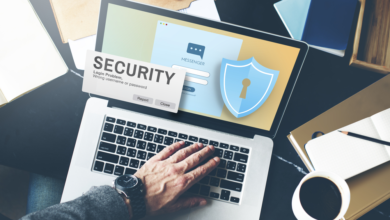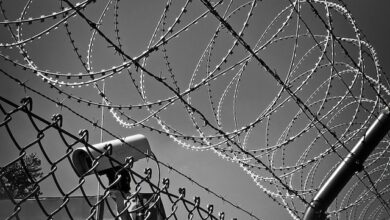A Smarter, Safer Approach To Hospital Security
by Zach Jory
KEY TAKEAWAYS
Hospital security is tricky. Medical centers should be a place of healing and provide a welcoming atmosphere, but the reality is that hospitals and medical campuses create environments that are difficult to monitor and secure, and regularly experience violence. Hospital security teams have a tough job – provide a safe environment, while largely remaining invisible to patients and staff.
These security teams need to provide a highly professional and courteous approach to interacting with patients, staff, and the public, with a focus on de-escalating and avoiding the use of force. What’s equally important, is being able to provide transparency into any incidents that do occur. In healthcare settings, it’s critical to provide security staff with tools that allow them to remain effectively invisible to patients and visitors, but able to quickly and effectively intercede and de-escalate any tense situations.
Hospitals and healthcare facilities are institutions of care and healing, and it’s important to provide a safe and non-threatening environment to patients and clients. But as many healthcare security leaders know, occupations like nursing face some of the highest assault rates of any profession that exists. Nurses are more likely to be assaulted than police officers, with 76% of active nurses experiencing some form of assault in a year. With this in mind, healthcare security must provide tools and means of de-escalation that go largely unnoticed but are extremely effective when called for.
Risk Management is of the utmost importance in healthcare security. De-escalation, Transparency, and Efficiency are the methods by which healthcare security organizations can most effectively manage risk.
- De-escalation – Avoiding the use of force is critical in keeping officers, staff, and patients safe and ensuring you do not face costly lawsuits or investigations.
- Transparency – Dispelling or verifying claims from any incidents quickly and with certainty is critical to eliminating risk from costly investigations and lawsuits.
- Efficiency – A smart incident management platform improves operations efficiency and frees up time that can be better spent serving and protecting patients, staff, and visitors.
Modern hospital security leaders are equipping officers with tools that enable them to effectively respond to any critical incidents and also provide complete transparency into responses to de-risk the business and continually improve officer skills and professionalism.
Security solutions like body-worn cameras, conductive energy weapons, and incident management software are proven technologies that directly support and improve transparency, de-escalation, and safety. These solutions offer enhanced situational awareness and transparency, strong means of de-escalation, and an easy way to manage and share data to mitigate threats and risks within hospital facilities and networks. Leveraging new technology, hospitals are seeing dramatic improvements to security, access control, and monitoring, patient service, and loss prevention.
Body-Worn Cameras
Security professionals operate in a charged and litigious environment. The wrong move can put organizations or individuals in the headlines for all the wrong reasons. You need training and tools that allow your security officers to effectively manage tense situations without the use of force and data that quickly allows you to dismiss false claims. You must be able to provide a look into situations as they happened and easily share that information with law enforcement agencies or the public to dispel any false claims.
Body-worn cameras allow hospitals, clinics, and other medical facilities to greatly increase the effectiveness of video coverage provided by fixed cameras, with the addition of a mobile, first-person point-of-view camera option that provides better coverage, rapid deployment, instant scalability, and audio recording. Furthermore, the live-streaming capabilities available on some body-worn cameras provide a means for supervisors to monitor and triage tense situations even if they are not physically present. This is situational awareness can also act as a force multiplier enabling the most appropriate response in terms of whether or not to dispatch backup. GPS-enabled hardware allows management operating as incident commanders to ensure proper resource positioning and adapt as needed, whether for an emergency or as a simple need to shift deployment of personnel based on staffing or facility capacity.
Equally advantageous is the ability to monitor patient, visitor, and staff interactions for the purposes of loss prevention, training, or providing indisputable evidence.
The presence of body cameras drives better behavior in the majority of situations as people behave better when they know they are being recorded. In the instances where the presence of a body camera is not enough, a conducted energy weapon is often a good intermediate force option in healthcare settings.
Conducted Energy Weapons
In critical situations that require the use of force, Conducted Energy Weapons (CEWs) provide a less-lethal option that can keep guards, staff, and patients safe without the danger of firearms. In many situations, simply presenting a CEW has proven to be an effective enough de-escalation tactic that weapon deployment is not needed. If the use of force is necessary, CEWs are by far the safest use of force option in confined quarters, where the use of OC spray or firearms has a high potential to inflict damage beyond the intended target.
CEWs have a long and proven track record. TASER CEWs have had over 4 million field uses and are the most-studied intermediate use-of-force option in existence with over 800 studies affirming the safety and efficacy of the weapon. Studies show that the use of TASER CEWs:
- Resulted in a 70% reduction of guard injuries and a 40% reduction in assailant injuries*
- Display of a TASER device de-escalated 80% of situations without the need for use of force**
Body cameras and conducted energy weapons provide a strong pairing that enables healthcare security to de-escalate almost any situation and capture the exact truth of what happened. Another critical consideration for security operations is how to effectively ingest, store, manage and share all the data captured by these connected devices.
Incident Management Software
A dependable incident management platform is the lynchpin that enables modern healthcare security organizations to more safely and effectively respond to threatening situations. Maybe, more importantly, it is how innovative organizations are driving smarter and more efficient operations. Modern, cloud-based Incident Management Software automates the ingestion and storage of data and streamlines managing and sharing. This is powerful because it makes it easy to review data for training, performance, and risk mitigation purposes, and makes it easy to recall and share any critical incidents to provide the necessary level of transparency to de-risk operations and avoid costly claims and litigation. Healthcare security operations that are correctly leveraging incident and data management software are reducing the amount of time they spend on data gathering and operations tasks so they can spend more time serving staff, patients and visitors.
*Ho, J., Coplen, M. Driver, B., Presentation of the Conducted Electrical Weapon De-Escalates Violence in the Healthcare Setting, 10th Euro Congress on Violence in Clinical Psychiatry, Dublin, Ireland, October 2017.
** Blando, James D., Robert J. Cramer, and Mariana Szklo-Coxe. “Hospital security programs and policies related to guns and other weapons.” Journal of Healthcare Management 64, no. 3 (2019): 157-166.
Bio
Zach Jory – Director, Axon Enterprise Marketing
Zach has worked in the software industry for over a decade and is keenly focused on how software and technology are transforming the way every industry operates. At Axon Enterprise, he is dedicated to helping companies in the security and other commercial segments innovate the way they provide security and transparency to protect their people, customers, and assets.





